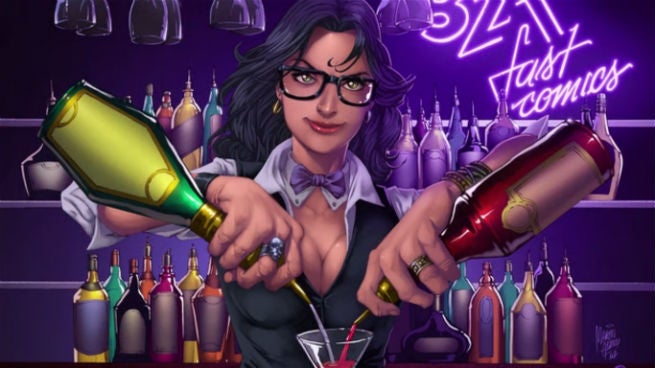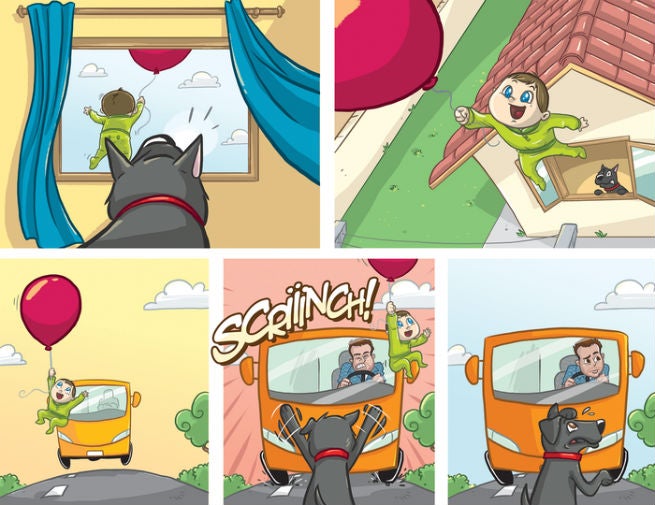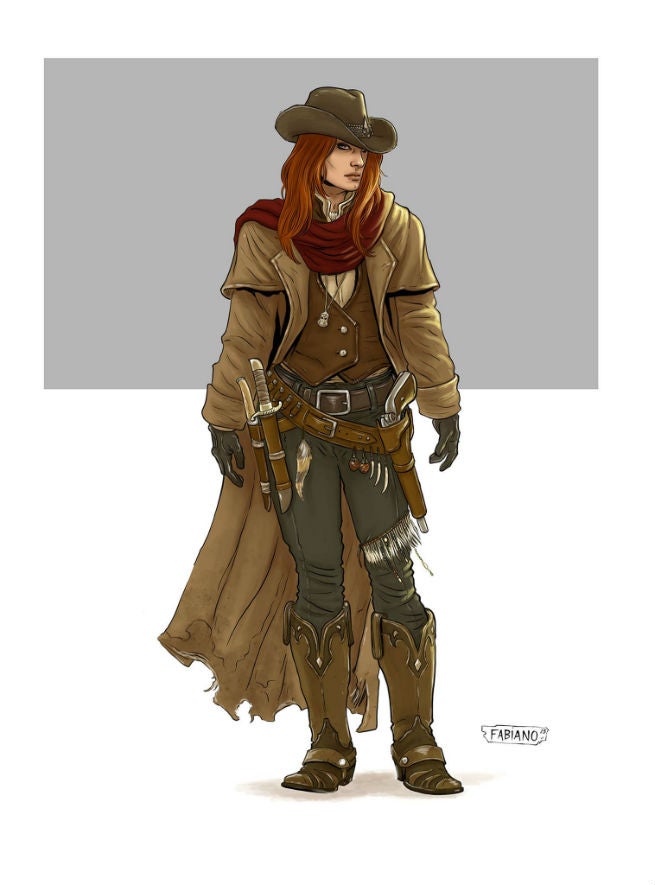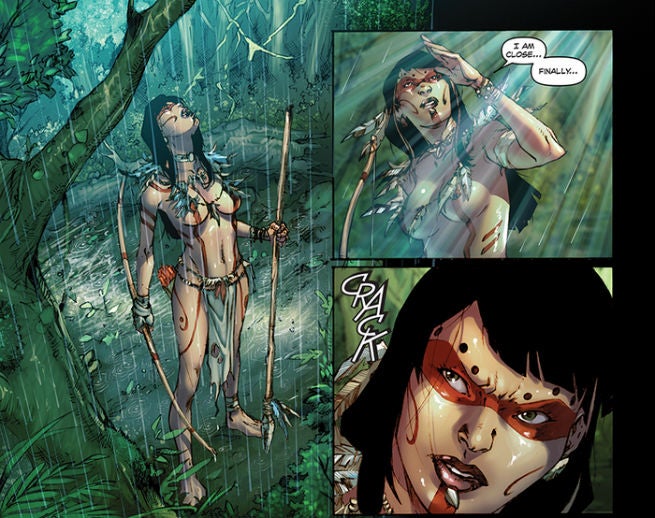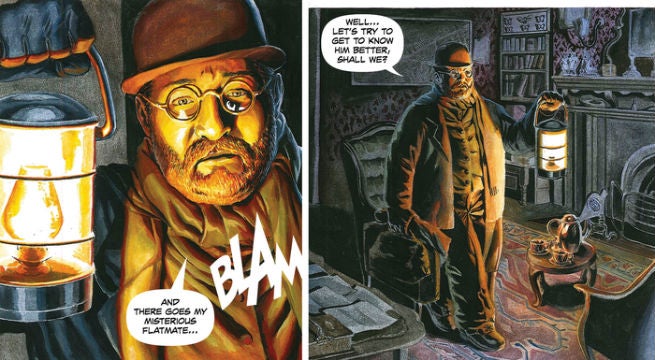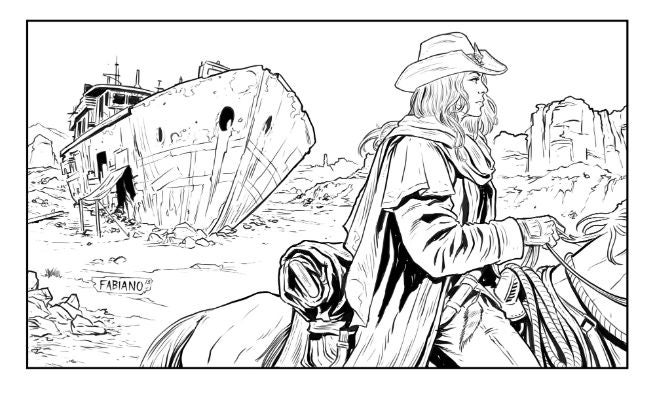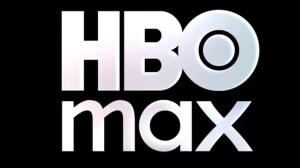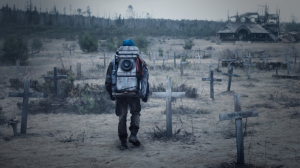Videos by ComicBook.com
The comic, which was funded via Kickstarter for a U.S. release, is a storytelling challenge where artists and writers must come up with short comic stories that always have:
3 Pages
2 Characters
1 Twist Ending
As long as the above rules are respected, anything goes: any genre, any characters, any situation. The challenge is always to surprise readers at the turn of three pages.
Cagno joined ComicBook.com to talk about the project.
What was the impetus for challenging yourself with a format like 321?
It was working with as many artists as possible on the same project. I love comics, always did, and I’m a sucker for good artwork. It’s one of my biggest letdowns in life, not knowing how to draw or paint. At my first comic con in Brazil as a professional, I was really starstruck when meeting some of my favorite artists and to my surprise, they were eager to work on something on top of their regular jobs with superheroes.
Since I would never be able to choose just one or two artists to work with, I decided to do an anthology and avoid the choice altogether.
A few years on and with the reasons and benefits well-documented, do you still have to answer the “why Kickstarter?” questions, or has that ore or less passed?
It has passed, definitely. Crowdfunding has certainly established itself as a proper venue for comics, not only it’s a great way to get your project financed but it’s fantastic to build up a fan base. Many comic book fans keep coming back to Kickstarter to see what’s new, it’s almost like Previews, although in a much smaller scale.
Having just successfully funded my first title on Kickstarter, I’m confident to say most of my backers came from people just browsing Kickstarter for a good comic book, people are really doing that on a regular basis. Even top name creators venture those waters every now and then because it’s reliable if you work hard and do a good job at it.
Oh yes, definitely. For starters, I was really surprised when Marcelo Maiolo approached me wanting to write a story, he’s a phenomenal colorist due to get an Eisner nom and I had no idea he always wanted to give writing a try. I was a bit reluctant at first and then he turned in what I think is one of the best stories in the book. He showed great timing, creativity and a terrific sense of humor, that very surprising.
I had seen Ivan Nunes’ work before, he colored the Game of Thrones comic book adaptations, that’s how I was introduced to his work but the stories he colored, the range he showed, definitely surprised. He’s got three stories in the book, each with its own style to better fit the penciller’s art and genre.
I really must say that overall I was pleasantly surprised with everyone. As the stories are so short, just three pages each, everyone brought their “A” game and there was this healthy competition going on, nobody wanted to be left behind. For every finished page I posted, all the artists wanted to top that and deliver their best, and like I said, because they were so short, people had the time to go that extra mile.
I’m actually working on three different comic book projects right now and all of them with artists I worked with for the first time on the 321: Fast Comics.
I’m teaming up again with Marcelo Maiolo for a spy thriller set in early 20th century, I have Geraldo Borges and Ivan Nunes on a fun treasure hunting adventure and there is the post-apocalyptic western, “The Few and Cursed”, which is a direct sequel to the 321 story I did with Fabiano Neves.
What was the hardest part of putting this all together? On the one hand the short pieces seem manageable, but on the other hand you’ve got a TON of moving parts.
You answered your own question, it’s a ton of moving parts and a large crew to manage. That was the hardest thing about the 321, making sure everyone was producing in time and, this might sound silly, but they all needed to work with the same page format as well, otherwise putting the whole book together would be a nightmare.
There’s a lot of organizational skill and motivational candor to put this all together. On the other hand, it’s just three pages for each artist, so on their end, it moves along quite fast. I had these gigantic color-coded lists to keep track of it all, the penciling, inking, coloring, lettering, each story went through those stages in their own time. Not easy but very rewarding.
Did you have any hesitation about the Superman cameo?
Not really, it’s just supposed to be a little inside joke with comic book fans. I thought that if Sergio Aragonés could have his fun, and the porn industry can do their XXX parodies, why couldn’t I have a little homage myself?
I did have to tweak the dialogue a bit before the release through Comixology. In the original draft, the reference was a lot more blatant.
I think it was 15, but usually the stories take between 18-20 panels. Trust me when I say, it’s not easy telling a story with that many panels, that’s something I had to pick it up as I wrote the first volume. Sometimes I would have 9 or 10 panels in a page and the artists would get back to me asking for a rewrite because that many panels in a page would not fit, it was pretty collaborative that way, the artists really pushed me to be a better writer.
Did you feel, or did the artists, at all hobbled by things like it being pretty impractical to have a splash or a more wide-open panel layout?
I can’t speak for the artists, but I find that limits force me to be more creative. If you have all the space and freedom in the world, you tend to stray and get lost within the story itself, you get distracted. With just the three pages, you either get to write a very focused story with beginning, middle and end, or it’s not going to work.
You can still use a splash page, you just need to be more responsible with it, use it to maximum effect. After all, you’re trading a third of your entire story for one panel, it’s doable but it needs to be wisely planned. Much like the wide-open panel layouts, the artists just need to carefully consider all their panel choices. On the other hand, it’s just three pages so I can’t imagine any of them feeling hobbled, at least not one of them gave me that impression.
The story “A True Panda’s Love” had a fantastic layout and color palette. It’s brilliant in its simplicity, Vitor Cafaggi did a phenomenal job with it. When I came up with the story, all I wrote was the outline, no panel breakdowns or script per se, and Vitor took that, built upon it and the result is a three-color story with an average of 13 panels per page that reads fantastically.
I’ve heard from several readers and websites that they absolutely loved the “panda story”, and credit must be due to Vitor, I could not have written a better presentation or layout.
You got to do a TON of different genres and styles. After the book was done, was there anything that you went, “Oh, crap, I wish I’d had THIS in there?”
Not really, it was just fun tackling that many genres and doing things I never thought I would do. Never saw myself writing a western but I had such a good time with the 321 story that we expanded that into a full graphic novel. Pirates was something I have always wanted to do and I’m happy with how that story turned out but I didn’t get that out of my system yet, for the next 321: Fast Comics we have an amazing pirate story.
There wasn’t anything specific that I wish I’d had in there but I loved the format so much I’m already deep in production for volume 2 and tackling some new genres and material. I love 80’s movies and that was one of the first themes/genres I knew I’d tackle on the new book.
I think I will be able to answer this in a more definitive way when I release book 3 of the series in 2016. When I was prepping the final PDF to send to the printer last year, the book designer and myself joked it made sense to have a trilogy, you know, books 3-2-1 up on the shelf. And that’s the plan for the time being.
Last year I released book #1 in Brazil and digital format in the US, this year will see the release of book #2 and next year I will close up shop with book #3. I think I’m already making my peace with this plan, so this divorce will be a slow but healthy process I imagine.
And you’re quite right, eventually I will have to let the 321 format go, at least from a writer’s standpoint. Maybe I will end up only editing and producing new books.
Did you try pitching this around before you headed to Kickstarter?
This was never supposed to be such an official comic book title, when I set out to produce the 321: Fast Comics book, I just wanted to do something fast to open some doors for future projects. I was, still am, pretty surprised at all the praise and success we’ve been having, all the doors this project is opening up. It really is going above and beyond any plans I had before.
So, no, I never thought of pitching the 321 around, it was always the plan to crowdfund it. First in Brazil to cover the production costs and then Kickstarter for the printing and distributing costs in the US.
Did you take anything away from some of the other recent big comics anthologies on Kickstarter, like the Unlawful Good book or anything like that?
To be completely honest, I was very removed from Kickstarter altogether until the time I decided to pursue it as viable way of bringing my work to the United States and other countries.
Once I had decided to use Kickstarter, then I went online and researched a number of projects, reached out to about a hundred project creators for tips and hints, I did my best with the homework and I’m glad that I did. One of the main reasons I was able to reach my goal was because I listened to the nice folk that were willing to offer a helping hand.
I feel like beautiful women were a big part of marketing and promoting this, even though the book itself certainly wasn’t too racy or cheesecake-y. Do you think that’s an important tool in terms of getting an audience to pay attention so you can make your pitch?
No, not really, I mean, it’s not something we pursued consciously. The best pitch we can always make is the format, it’s the 321 way of telling a comic book story. The way we came up with the cover was I always wanted the logo to be part of the scenery and when we had settled on the “bar” theme to flow through the whole book, having a beautiful woman seemed natural.
It’s not that we thought of it as an important tool to promote the book. We wanted a sexy and jazzy kind of bar and that’s what happened.
What’s your bottom-line pitch for this project?
It’s got something for everyone. That was our motto working on it and will continue to be as we prep the next one. The more art styles and genres we get in there, the better. We’re actually running a Contest through DeviantArt to publish and award with cash prizes the top three stories and the top three pin-ups. So, whoever out there wants to get published and some cash, visit the contest rules here.

